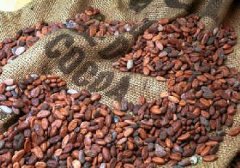An analysis of the words on the sack bag of coffee beans in the manor

Seeing the sacks of green raw coffee beans carried in gunny bags, I could not smell any coffee aroma and was inconspicuous, but the line of sight was attracted by the sacks of coffee beans that are rarely seen, because these sacks are like paper for wine bottles, full of information about coffee beans, it turns out that the life experience of a bean is so complicated.
1. A bean-producing area / manor / cooperative
Fedecocagua, or Federation of Cooperatives of coffee from Guatemala, was founded in Guatemala in'69 to assist small-scale farmers, provide new planting techniques or loans, and help find ways to sell so that their lives can be improved. There are similar organizations in other places, such as Mogiana in Brazil.
two。 Specification / grade
Each country and region has a set of criteria for analyzing the grade of coffee beans. If you are not familiar with coffee beans, you will be confused by these various grades. For example, Central and South America will use SHB (Strictly Hard Bean) and SHG (Strictly Hard Grown) to indicate that coffee beans are planted at an altitude of 1000m or above, which means they are excellent varieties. But the coffee beans in Brazil's SS (Strictly Soft) are at the top, including Indonesia's [Grade1-4], America's size, South America's producing advantage, and Africa's [A, AA, AAA).
3. Processing method
The processing methods of raw coffee beans can be divided into three methods: water washing (wet processed), drying (dry processed) and semi-washing. Clean Coffee is equal to washing. The processing of coffee beans is mainly determined by the nature of the beans, followed by the consideration of economic cost, and different processing methods will also affect the taste of coffee beans. Drying method can best retain the original flavor of coffee beans, sun-dried coffee beans taste strong and earthy (Muddy), but it takes a long time, about 2 weeks. Washing with water is cleaner and takes a short time, which takes 2 to 3 days, but because the coffee beans go through the fermentation process when soaked in water, the acidity is go. As for semi-washing, it is soaked before drying, which can not only retain the original taste, but also improve the acidity and taste.
4. Place of Origin
Indicate the place where coffee beans are grown, and the areas where good varieties of coffee beans can be grown are concentrated between the Tropic of Cancer and the Tropic of Cancer, collectively referred to as Coffee Zone or Coffee Belt. Such as Guatemala (Guatemala), Yemen (Yemen), Kenya (Kenya), Jamaica (Jamaica), Ethiopia (Ethiopia), Indonesia (Indonesia) and Java (Java) and other places.
5. Harvest year
6. Weight
Important Notice :
前街咖啡 FrontStreet Coffee has moved to new addredd:
FrontStreet Coffee Address: 315,Donghua East Road,GuangZhou
Tel:020 38364473
- Prev

A healthy life of drinking coffee has nothing to do with heart disease
For drinking coffee, many people have specifically complained that it may pose a threat to the cardiovascular system and bones. In recent years, more and more studies believe that the so-called threats have been misunderstood for many years. Coffee has nothing to do with heart disease American scholars have analyzed the data published around the world over the past 30 years on the relationship between coffee and heart disease, and found that the level of coffee consumption and the heart
- Next

Why do you like coffee? what's the charm of coffee?
Alcohol or tobacco can make people feel intoxicated and exciting, just as caffeine can be exciting. Caffeine, due to the role of stimulating the central nervous system or muscles, can restore muscle fatigue, improve work efficiency, and have a sober effect that can make the mind respond lively and sensitive. And asthma caused by stimulation of the sympathetic nerve, which can suppress the excitement of the parasympathetic nerve.
Related
- Beginners will see the "Coffee pull flower" guide!
- What is the difference between ice blog purified milk and ordinary milk coffee?
- Why is the Philippines the largest producer of crops in Liberia?
- For coffee extraction, should the fine powder be retained?
- How does extracted espresso fill pressed powder? How much strength does it take to press the powder?
- How to make jasmine cold extract coffee? Is the jasmine + latte good?
- Will this little toy really make the coffee taste better? How does Lily Drip affect coffee extraction?
- Will the action of slapping the filter cup also affect coffee extraction?
- What's the difference between powder-to-water ratio and powder-to-liquid ratio?
- What is the Ethiopian local species? What does it have to do with Heirloom native species?

